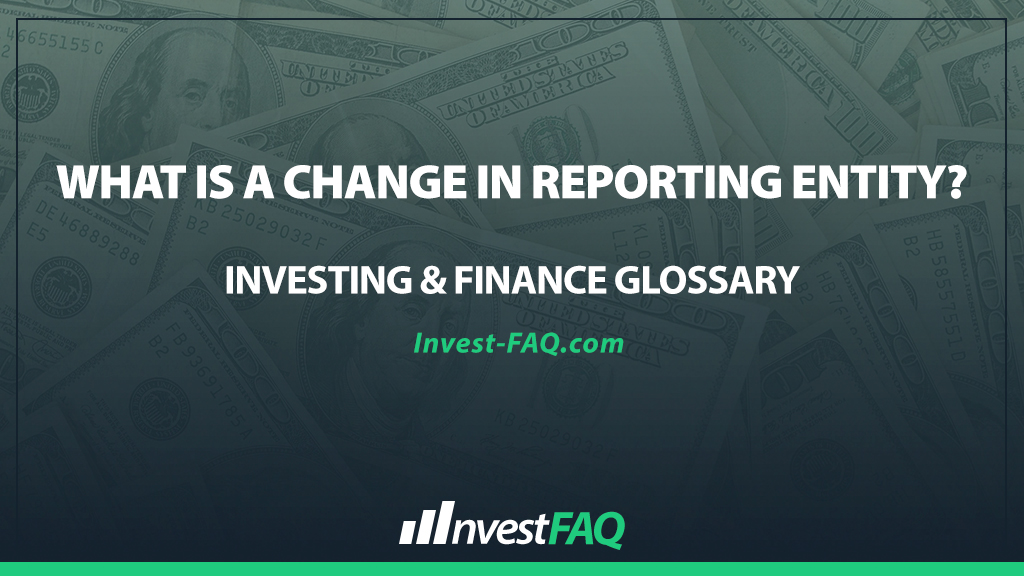
Change in Reporting Entity
Contents
A change in reporting entity occurs when there is a modification in the boundary of the financial statements being reported. This can involve changes in the composition of the companies or operations included in consolidated financial statements, such as through mergers, acquisitions, or divestitures, affecting how the entity’s financial and operational results are presented and analyzed.
Changes in reporting entities are significant events in the business world, necessitating adjustments in financial reporting to reflect the new structure accurately.
These changes ensure stakeholders have a clear understanding of the financial health and performance of the newly defined entity.
It’s crucial for maintaining transparency, comparability, and consistency in financial statements across reporting periods.
Example of a Change in Reporting Entity
Consider “ABC Corporation,” which, at the start of the fiscal year, operates independently. Mid-year, it acquires “XYZ Corporation” and decides to include XYZ’s operations in its consolidated financial statements for the current and future reporting periods.
Before Change: ABC Corporation reports only its own financial activities.
After Change: ABC Corporation’s financial statements now consolidate its operations with those of XYZ Corporation.
Adjustment Required: Restate prior period financial statements to reflect the combined operations of ABC and XYZ, as if the acquisition had occurred at the beginning of the comparative period.
In this scenario, the acquisition leads to a significant change in the reporting entity of ABC Corporation, requiring the consolidation of financial results.
This restatement allows stakeholders to make meaningful comparisons across periods by viewing the operations of ABC and XYZ on a combined basis.
Adjusting the financial statements retrospectively ensures consistency and comparability, providing a more accurate picture of the new entity’s financial position and performance.
Significance for Investing & Finance
The concept of a change in reporting entity is significant for several reasons:
Comparability: Ensures financial statements are comparable across periods, even when the composition of the reporting entity changes, aiding stakeholders in their analysis and decision-making.
Transparency: Discloses to stakeholders the nature and impact of changes in the entity’s structure, promoting transparency in financial reporting.
Regulatory Compliance: Complies with accounting standards requiring that changes in reporting entities be accounted for retrospectively, ensuring the financial statements reflect the new entity structure accurately.
Strategic Insights: Provides insights into the strategic moves of a company, such as mergers and acquisitions, and their impact on the company’s financial health and operational performance.
In summary, a change in reporting entity is a critical event in the lifecycle of a company that has profound implications for financial reporting.
Accounting for such changes is essential to ensure that financial statements accurately reflect the current structure and operations of the company, thereby maintaining the integrity and usefulness of financial information provided to investors, regulators, and other stakeholders.
FAQ
What constitutes a change in reporting entity, and how is it reflected in financial statements?
A change in reporting entity occurs when there’s a modification in the scope of the consolidated financial statements, such as through mergers or acquisitions, and it’s reflected by restating prior period financial statements to present a consistent and comparable view of the new entity structure.
How does a change in reporting entity impact stakeholder analysis of a company’s financial health?
Changes in reporting entities require stakeholders to adjust their analysis based on restated financial information, ensuring they are evaluating the company’s performance and financial health on a like-for-like basis with previous periods.
Are there specific accounting standards that guide how changes in reporting entities should be handled?
Yes, accounting standards such as IFRS and GAAP provide guidelines on handling changes in reporting entities, requiring retrospective application to ensure comparability and consistency in financial reporting.
What are the disclosure requirements for a change in reporting entity in financial statements?
Companies must disclose the nature of the change in reporting entity, the reason for the change, and the impact on the financial statements, including details of any restatements made to prior periods, to provide transparency and clarity to users of the financial statements.
